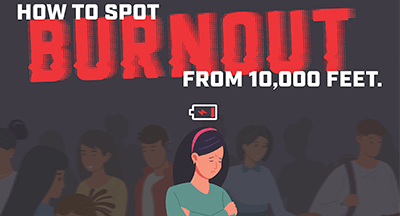
As time goes on, we’ve grown accustomed to constant change. Teachers are adapting to new online methods of instruction. Educators, kids, and families have been pushed to the limits of patience—and ingenuity.
What we’re learning
Above all, we’re learning how unrealistic expectations kill the possibility of meaningful growth. Education leaders are cautioning against the temptation to “do school” at home—attempting to replicate the normal classroom environment in a home setting which is anything but normal.Options for mobile learning have been called into the front lines, including one-way video lectures and other blended learning strategies. Flexibility is key to making progress, and progress is preferable over perfection. Educators are making assignment plans on a weekly, rather than daily, basis. Students then complete their assignments on a schedule that works for them and their families. Siblings and parents may be vying for the same devices all day. Instead of marathons of seat time, educators might set students up for short sprints of engagement punctuated by scheduled one-on-one or class lecture time.
Aside from the health concerns keeping families homebound, danger lurks in online applications as well. Hackers are taking full advantage of new remote learners and workers. Established, approved, and vetted edtech options should always take priority over one-off applications, which can contain vulnerabilities.
Developmental stages
Educators are in a unique support position for kids during these historic times. As teachers plan lessons, standards and learning are at the forefront of brainstorming—it’s impossible to override that training. However, teachers can empower students at a time when many feel completely powerless. Here’s how.Early childhood
Preschoolers, depending on where they are in toddlerhood, possess a 10–15-minute attention span. This keeps parents who are trying to balance working from home with childcare very much on their toes.Social-emotional development at this age can be hard to replicate. Kids are missing the interaction they get with their friends and teachers, and their work is extremely difficult to move online, since students cannot read independently.
Movement is important for students at this age, so combining video and activity helps capture their attention for a few precious minutes.
Middle grades
This age might pose the trickiest to reach. Desperate to assert their independence, they’ve suddenly found themselves with even fewer options to do so. Project-based learning is great for this developmental group. Allow them to choose an area of expertise and produce something to prove they’ve enriched their expert status. If this expertise is skateboarding, that’s just as valid as calculus or literary classics. The choice and agency afforded is worth it.Teens
This group might have the highest expectations for participation. While districts in affluent areas are seeing high levels of participation, students in lower income areas may be occupied by tasks like childcare for younger siblings who are also out of school, while parents are still working.It’s a catch-22: These students have the most to lose, since they are so close to graduation, but teen students who are called in to active duty as substitute parents have little recourse—especially if their household lacks adequate internet connection.
This is where the weekly, not daily, expectations can mean the difference between a student feeling completely helpless and feeling confident enough to participate.
Parents
Schools have always been in the business of helping parents, but it’s more important now than ever. And parents are seeing that firsthand as they help their children.Especially for younger students, parents quickly realize assignments are just as much work for them. Depending on the household and the district’s capability to provide 1:1 technology, there may be a backlog of available devices. Offering maximum flexibility can be a lifesaver, since many parents are still working.
The district has a couple choices: they can either pile on work in the name of standards mastery, or they can take an understanding route and remind families progress is what’s important. Either way, good communication is the foundation to build on. Parent portals take the email guesswork out of the equation and can deliver a standard message to every family quickly, or provide a secure place for teachers to exchange messages with students and parents.
Maintaining teachers’ sanity
Under the best of conditions, teachers are in constant states of improvisation. They never know what the next challenge will be, and often it’s times 10, 15, or 30. This training prepared them to respond better than anyone ever would have thought possible. That said, teachers are only human.Encourage them to breathe. To trust themselves (because you trust them, too). To take everything week by week. Minimize and absorb all you can, as a school leader, so teachers can in turn minimize the trauma happening to kids.
Teachers are (mostly) all in the same boat across the country. They can lean on their team virtually, via social media, and learn from each other what works and what doesn’t. Empowerment to try and fail, then try again, is crucial to teachers’ mental health.
Maintaining administrators’ sanity
As teachers staff the front lines, administrators remain behind the scenes keeping district operations moving smoothly. Some are working remotely, some visit school buildings or help distribute meals to students. All are depended on (and held mercilessly accountable) by their entire community.It’s a lot to handle.
The best response teams have continued to be visible. They’re making frequent statements, some via video, to keep families informed. Over-communication isn’t possible in this situation, which changes daily.
Payroll, time tracking, reporting of some sort, and other operations remain essential. Gently reinforce healthy work-from-home habits. This is a prime example of how paperless, app-based time and resource tracking can be life-changing. It’s one less thing to set up and manage as schools pivot constantly to provide essential services.
The bottom line
Embrace the unexpected, feel it, then let it go. Be gentle with yourself first—the old oxygen mask adage remains valid.This isn’t normal, so you don’t have to pretend it is. We are all in this together, and we can do it.
Follow-up resource: Subscribe for more
Stay in touch by entering your email to subscribe to our monthly newsletter.WHAT'S NEXT FOR YOUR EDTECH? The right combo of tools & support retains staff and serves students better. We'd love to help. Visit skyward.com/get-started to learn more.

|
Erin Werra Blogger, Researcher, and Edvocate |
Erin Werra is a content writer and strategist at Skyward’s Advancing K12 blog. Her writing about K12 edtech, data, security, social-emotional learning, and leadership has appeared in THE Journal, District Administration, eSchool News, and more. She enjoys puzzling over details to make K12 edtech info accessible for all. Outside of edtech, she’s waxing poetic about motherhood, personality traits, and self-growth.




